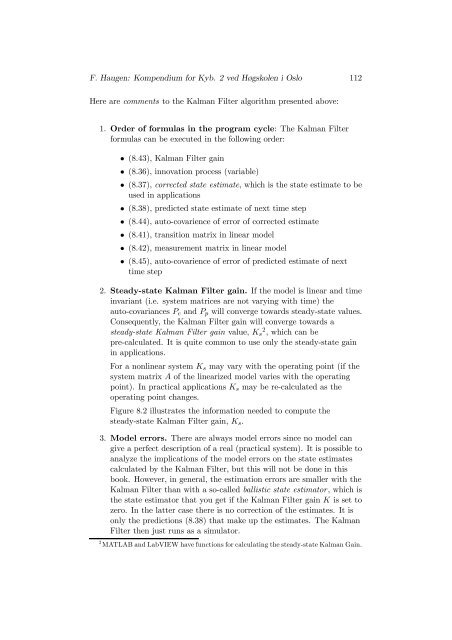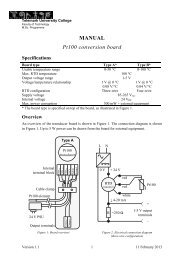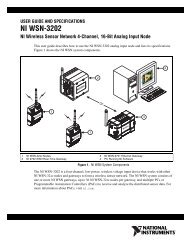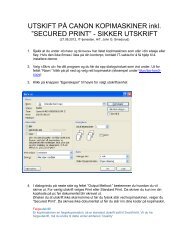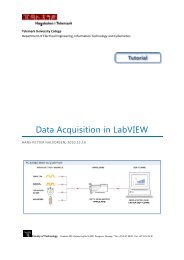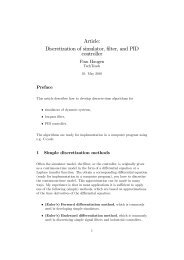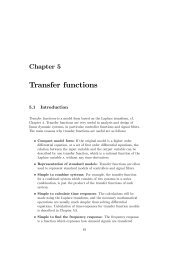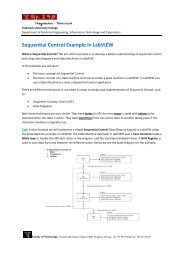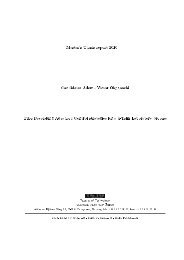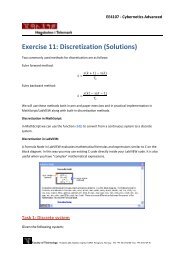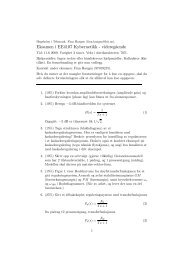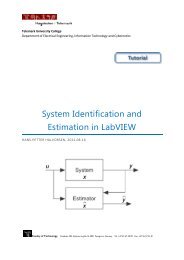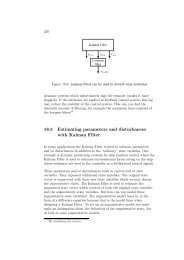State estimation with Kalman Filter
State estimation with Kalman Filter
State estimation with Kalman Filter
You also want an ePaper? Increase the reach of your titles
YUMPU automatically turns print PDFs into web optimized ePapers that Google loves.
F. Haugen: Kompendium for Kyb. 2 ved Høgskolen i Oslo 112<br />
Here are comments to the <strong>Kalman</strong> <strong>Filter</strong> algorithm presented above:<br />
1. Order of formulas in the program cycle: The <strong>Kalman</strong> <strong>Filter</strong><br />
formulas can be executed in the following order:<br />
• (8.43), <strong>Kalman</strong> <strong>Filter</strong> gain<br />
• (8.36), innovation process (variable)<br />
• (8.37), corrected state estimate, which is the state estimate to be<br />
used in applications<br />
• (8.38), predicted state estimate of next time step<br />
• (8.44), auto-covarience of error of corrected estimate<br />
• (8.41),transitionmatrixinlinearmodel<br />
• (8.42), measurement matrix in linear model<br />
• (8.45), auto-covarience of error of predicted estimate of next<br />
time step<br />
2. Steady-state <strong>Kalman</strong> <strong>Filter</strong> gain. If the model is linear and time<br />
invariant (i.e. system matrices are not varying <strong>with</strong> time) the<br />
auto-covariances P c and P p will converge towards steady-state values.<br />
Consequently, the <strong>Kalman</strong> <strong>Filter</strong> gain will converge towards a<br />
steady-state <strong>Kalman</strong> <strong>Filter</strong> gain value, K 2 s ,whichcanbe<br />
pre-calculated. It is quite common to use only the steady-state gain<br />
in applications.<br />
For a nonlinear system K s may vary <strong>with</strong> the operating point (if the<br />
system matrix A of the linearized model varies <strong>with</strong> the operating<br />
point). In practical applications K s may be re-calculated as the<br />
operating point changes.<br />
Figure 8.2 illustrates the information needed to compute the<br />
steady-state <strong>Kalman</strong> <strong>Filter</strong> gain, K s .<br />
3. Model errors. There are always model errors since no model can<br />
give a perfect description of a real (practical system). It is possible to<br />
analyze the implications of the model errors on the state estimates<br />
calculated by the <strong>Kalman</strong> <strong>Filter</strong>, but this will not be done in this<br />
book. However, in general, the <strong>estimation</strong> errors are smaller <strong>with</strong> the<br />
<strong>Kalman</strong> <strong>Filter</strong> than <strong>with</strong> a so-called ballistic state estimator, whichis<br />
the state estimator that you get if the <strong>Kalman</strong> <strong>Filter</strong> gain K is set to<br />
zero. In the latter case there is no correction of the estimates. It is<br />
only the predictions (8.38) that make up the estimates. The <strong>Kalman</strong><br />
<strong>Filter</strong> then just runs as a simulator.<br />
2 MATLAB and LabVIEW have functions for calculating the steady-state <strong>Kalman</strong> Gain.


